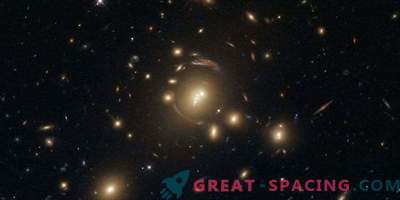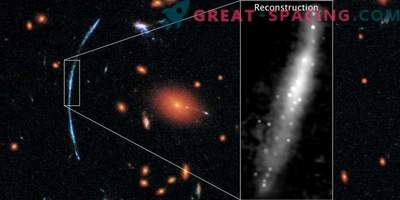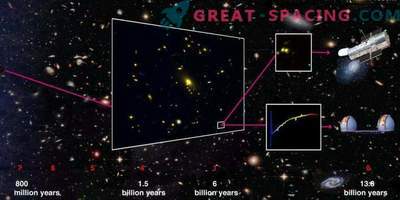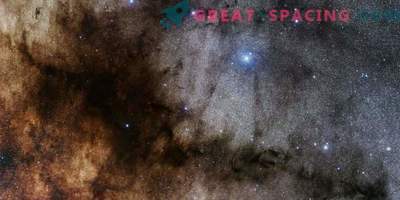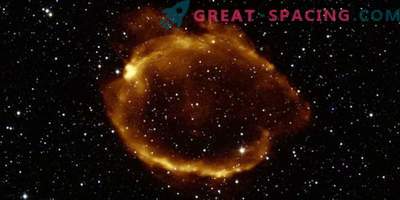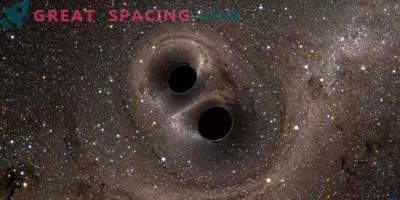
This is a picture of the galaxy cluster PLCK G004.5-19.5 captured by the Hubble Space Telescope. Planck's satellite and the Sunyaev-Zeldovich effect (distortion of the cosmic background radiation towards the galactic cluster by high-energy electrons in the gas inside the cluster) were used for the search.
A large central galaxy is the brightest and dominant object in the image. Above it you can see a thin curved gravitational lens. This is due to the fact that the gravitational forces of the cluster bend the stellar glow behind them.
Before the cluster, several stars are visible (owners of diffraction spikes). The remaining luminous objects are distant galaxies. The expansion of the space has involved their luminosity in the effect of red shift. By measuring this value, we know that it takes 5 billion years for a galactic cluster to reach us. The picture was taken on the ACS camera and wide-angle camera 3 as part of the RELICS observation program, which displayed 41 massive galactic clusters in order to find the most distant objects of the Universe. All the information received will be given to the analysis of the future telescope by James Webb.
